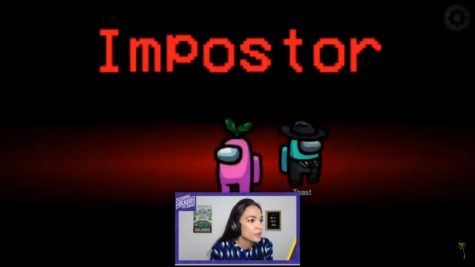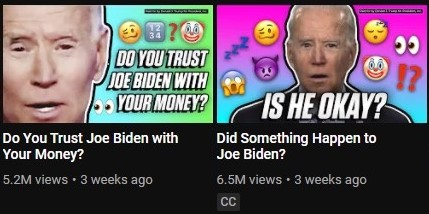Video Games and TikTok: How the Election is Reaching Students at Lewis Mills
November 17, 2020
With the lingering presence of murder on her mind, Rep. Alexandra Ocasio-Cortez executed her first victim, one of the many killings that would occur on the night of October 20th. This peculiar event occurred on Twitch, a popular live streaming platform where content creators play video games, among other activities, for a live audience. AOC amassed over 400,000 viewers playing the video game Among Us, in which players must work as a team to determine who the murderous “imposters” are among the crew.
The purpose of this unusual stream was to encourage young voters to head to the polls for the upcoming election, but AOC is not alone in her methods of promoting a political agenda. Politicians are increasingly utilizing forms of media targeted towards younger audiences as a vessel for political messages. But just how impactful are they?
Twitch’s streaming platform has received a whirlwind of attention during the past few months, making it no surprise that high school students at Lewis S. Mills are highly aware of AOC’s momentous stream. Among these students is

Brooke Kvedar, a senior who viewed the live stream and praised AOC’s political activism methods.
“I really enjoyed that she reached out beyond the typical social media platforms to a new audience that may not generally be involved in the voting process to go out and vote,” Brooke remarked. The number of viewers who submitted a mail-in ballot or decided to head to the polls on Election Day after the stream is unclear, but there is no doubt that AOC’s primary message made its way to hundreds of thousands of Twitch audience members.
Apart from AOC, the presidential candidates themselves have been taking great advantage of social media, plastering their ads on various sites. Many of these advertisements directly reach students at Lewis Mills, from Youtube to Facebook, and of course, to TikTok. With bright, flashy thumbnails and even emojis featured, it is evident that both Trump and Biden are aiming to capture the attention of the younger generations.

A Trump campaign ad featured on the Youtube home-page reads “Did Something Happen to Joe Biden?”, with an image of Biden surrounded by emojis such as bulging eyes, a clown, and an upset devil. Seemingly innocent jokes, this use of popularized emojis and vivid thumbnails is reminiscent of clickbait methods that other Youtube channels employ in order to garner attention. Yet, in reality, many Mills students are unimpressed by these efforts.
“Political views today are very polarized, so I doubt people who see these ads are convinced to change their perspectives on politics,” states Lilah Moley, a senior at the high school. Especially in the environment of Lewis Mills, where both sides of the political spectrum are strongly represented, many students believe that a simple video or photo on a social media website is not very likely to alter one’s opinion immediately.
Samantha Plebanek, another senior, shares a similar viewpoint with Lilah about the effectiveness of political advertisements on social media. Samantha explains how she believes that these ads only further divide people on their beliefs about each party, rather than changing anyone’s perspectives about a candidate. As many teens express, when scrolling through videos and memes on a platform like TikTok, their attention is not be entirely focused on a political ad that they would much rather skip.
Despite specific campaign marketing not having a monumental impact on young citizens’ opinions, it is still clear that social media has profoundly affected our youth’s political climate. Information spreads like wildfire among tech-savvy teens, who then add fuel to the flames as they like, share, and comment on posts.
“The younger generation, including ours in school, has grown up on the internet. Social media allows individuals to gain a platform when otherwise they wouldn’t have been able to, so by having this voice, they are spreading their beliefs, political and nonpolitical, to those that value their opinion,” reflects Lilah.
Specifically at Lewis S. Mills, during the peak of the Black Lives Matter movement this past spring, several students were seen posting petitions, resources, and charities to their Instagram or Snapchat stories in support of the campaign. The same goes for the election, with students urging qualified peers to vote and participate in America’s democracy. Social media has become one of the fundamental manners in spreading politicized beliefs among teenagers, giving new power to these platforms.
Although social media has allowed the younger generations to create a more expansive dialogue about politics, there are also some risks. Jackie Johnston brings up that with the vast amount of information spread throughout social media platforms, “it’s very easy to spread false information, and nobody really knows at first.” It is crucial that sources are analyzed for credibility, but with the fast-paced nature of media, it is instinctual to see a shocking piece of news and automatically hit the share button.
As we enter an increasingly digitized era that is being heightened by the effects of COVID-19, politicians will continue to reach out to audiences, particularly America’s youth, through the networks of social media and other popular platforms. With the exception of some Trump campaign gatherings, massive rallies are not entirely possible anymore, with coronavirus restrictions and anxieties deterring many people from these large assemblies. As a result, social media will carry on in being a mainstream method of advancing political movements. Although many students at Lewis S. Mills high school are not significantly moved by the political promotions thrown at them, they are still experiencing firsthand the intense reverberations of social media in politics.